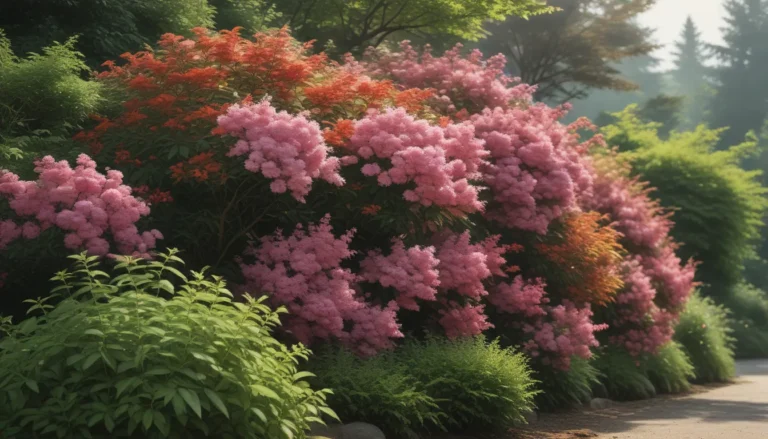How to Grow and Care for Hawthorn Trees 101

Are you ready to embrace life’s thorns? Let’s dive into the fascinating world of hawthorn trees and discover all the wonderful things they have to offer. From their resilience to their beauty, these trees are a valuable addition to any garden.
What Are Hawthorns?
Hawthorns, scientifically known as Crataegus, are robust trees that have been cultivated for centuries around the globe. With over 300 species in the genus, native to North America, Europe, and Asia, these trees are known for their hard wood and sharp thorns.
Varieties of Hawthorns
In North America, you’ll find various species such as Anomalous, Arnold, Canadian, Fireberry, Mayhaw, and many more. In the western part of the continent, species like Black, Cascading, Fleshy, and Riverflat hawthorns are common.
It’s essential to note that due to their hybridization tendencies, identifying specific species can be challenging in the wild. These trees exhibit taxonomic instability, creating a diverse range of shapes, sizes, and characteristics.
Characteristics of Hawthorn Trees
- Flowers: Hawthorns produce sweet-scented flowers in clusters of five petals, ranging from white to pink or red, with yellow, ivory, or pink anthers.
- Fruit: Their fruit, technically a pome or drupe, varies in color from pink to nearly black and resembles berries. The flesh is mealy, with a bitter flavor.
- Leaves: Hawthorn trees have alternate, simple leaves with smooth or deeply divided margins. Their foliage changes colors to vibrant shades of orange, red, and purple in the fall.
Cultivation and History
These trees have a rich history, dating back to centuries as medicinal ingredients in Europe and North America. While species like Chinese hawthorns are valued for their fruit in Asia, European variants are cultivated for ornamental, medicinal, and food purposes.
Medicinal Uses
Indigenous people in North America and abroad utilized hawthorn for various ailments, including heart conditions, digestive issues, and topical treatments. Today, herbalists appreciate these trees for their heart-healthy properties and memory-enhancing effects, among other benefits.
Hawthorn Tree Propagation
Growing hawthorns from seeds, cuttings, suckers, or air layering requires patience, as these trees have a slow growth rate. From sowing seeds directly in soil to nurturing cuttings and suckers, multiple methods can help propagate new trees for your garden.
How to Grow Hawthorn Trees
Hawthorn trees thrive in a wide range of environments, adapting to different soil types and light conditions. Their ability to withstand strong winds and pollution makes them suitable for various landscapes, from rural to urban settings.
Growing Tips
- Sunlight: Prefer full sun but can tolerate partial shade.
- Soil: Adaptable to various soil types, preferring well-draining conditions.
- Maintenance: Low maintenance, requiring minimal pruning and annual feeding.
Pruning and Maintenance
Pruning hawthorn trees is necessary to remove dead, diseased, or deformed branches. While pruning can be minimal, it’s essential to wear protective gear, considering their sharp thorns can cause injuries.
Best Uses for Hawthorn Trees
Hawthorn trees serve multiple purposes, from ornamental to edible and medicinal. Whether you use them as natural fences, pollinator attractors, or for their fruits and flowers, these resilient trees offer numerous benefits for your garden.
Quick Reference Growing Guide
- Plant Type: Perennial tree
- Hardiness: USDA Zones 3-9
- Spacing: 10 feet
- Height/Spread: Up to 30 feet/25 feet
- Exposure: Full sun or partial shade
- Bloom Time: Spring/fall
- Water Needs: Moderate
- Attracts: Various pollinators
- Uses: Specimen, hedge, medicinal, edible
Embrace the thorns of life by growing hawthorn trees in your garden. From their versatility to their resilience, these trees offer a wealth of benefits for your landscape. Let these majestic trees enrich your outdoor space with their beauty and vitality.





